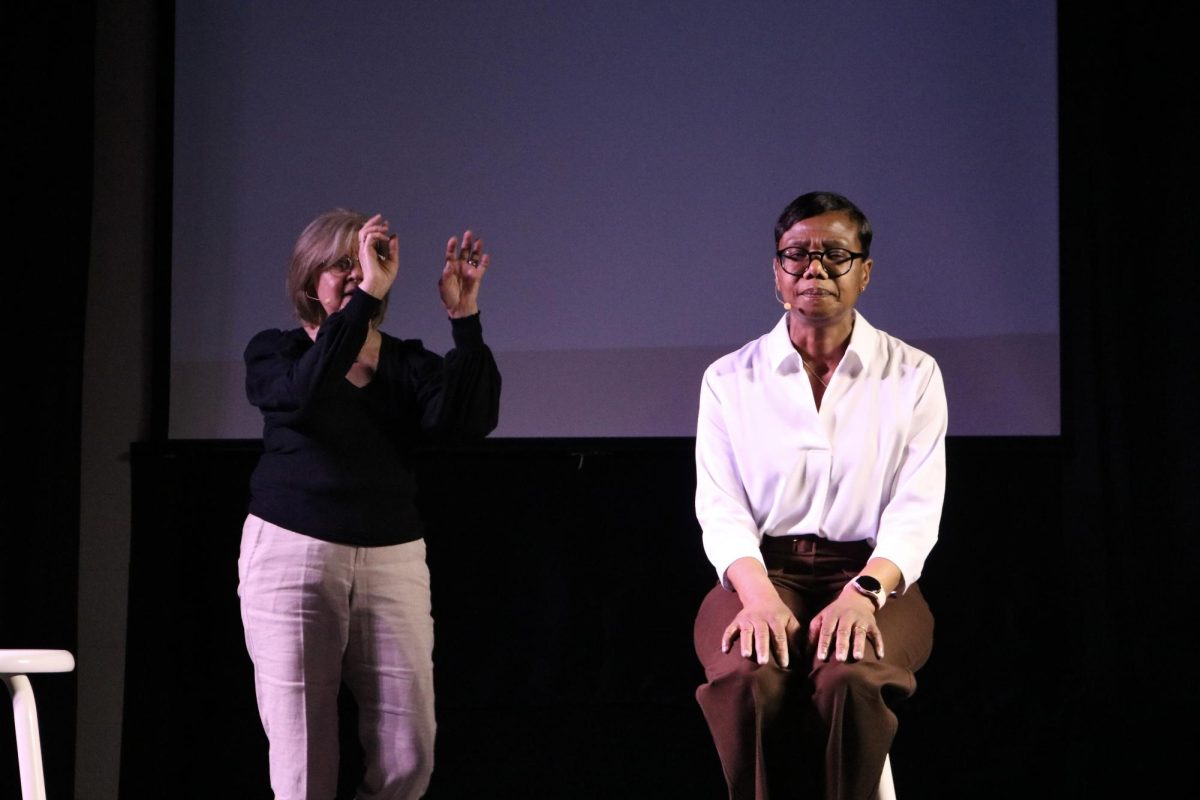
Eva Lilienfeld, News Editor
lilienfe17@grinnell.edu
The Harris Center in Poweshiek County, one of the most populated precincts, awarded 19 county convention delegates to Presidential Candidate Bernie Sanders and seven to Presidential Candidate Hillary Clinton on caucus night. However, the Iowa Democratic Party reported that the 1st Ward Grinnell precinct gave 18 delegates to Sanders and eight delegates to Clinton.
“To ensure the accuracy of our results, the Iowa Democratic Party worked with the Sanders campaign, the Clinton campaign and local party leadership to review results from 14 precinct caucuses,” Iowa Democratic Party Press Secretary Josh Levitt wrote in a press release on Feb. 7.
The reports were reviewed on a case-by-case basis, and nine of the 14 precincts were confirmed to have reported correctly on caucus night. However, the Iowa Democratic Party found that five precincts, including the 1st Ward in Grinnell, were misrepresented in the reporting process. The recalculation resulted in a reallocation of one county convention delegate or 0.072 state delegate equivalents from Clinton to Sanders.
According to Caucus Secretary Pablo Silva, History, the error in reporting was due to a miscommunication in calculating the proportions of caucus-goers supporting a particular candidate.
“In the case of these ‘proportions,’ the numerator is obvious, it is determined by the number of people standing for each candidate after the final round of preference declarations” Silva wrote in an email to The S&B. “The problem lies in determining the denominator, which is not as obvious as you would imagine.”
Nine hundred and twenty-five people attended the caucus at the 1st Ward, which means candidates needed 139 supporters to achieve viability and continue in the process. After the first round of preference declarations and two rounds of realignment, 612 Harris caucus-goers supported Sanders and 248 supported Clinton.
Using the number of attendees used to calculate viability, as suggested in the caucus rulebook distributed to Caucus Chairs, Silva calculated 17.2 delegates for Sanders and 6.9 delegates for Clinton, which according to Caucus rounding rules yields 17 for Sanders and seven for Clinton.
Because the 1st Ward is responsible for 26 delegates, second delegates still had to be allocated to the viable candidates. According to the rules, “an additional delegate will be awarded to the group with the highest decimal below 0.5.” However, this left the precinct with an extra delegate.
“By my reading, this rule would award an additional delegate to Sanders, so the count would stand at 18 to seven,” Silva wrote. “At this point, if we had followed the guide to the letter, we would have stopped and gone on to step 29 and informed the preference groups of the result, because this [is where] the instructions end in terms of awarding additional delegates.”
The error in calculation, however, stemmed from a miscommunication about dealing with this ambiguity. When Silva attended a training session for caucus organizers in October, he asked about this situation and was told it was unlikely. He eventually emailed the regional caucus director.
“The number that you use to award delegates is only based on the final alignment, so you only award delegates based on who is there after all of the alignments rounds are up,” the Regional Director wrote in an email, as quoted by Silva.
With this clarification, Silva counted 860 attendees after the final alignment rounds and used this number to determine the delegates. This yielded preliminary results of 18.5 delegates for Sanders and 7.4 delegates for Clinton—19 and seven with rounding.
“The IDP looked at our results, recognized that we had not used 925 in the denominator, and thus recognized that we had not followed the literal caucus guide instructions,” Silva wrote.
Since then, the IDP has confirmed that the original assignment of 19 delegates to Sanders and seven to Clinton has been upheld.





















































